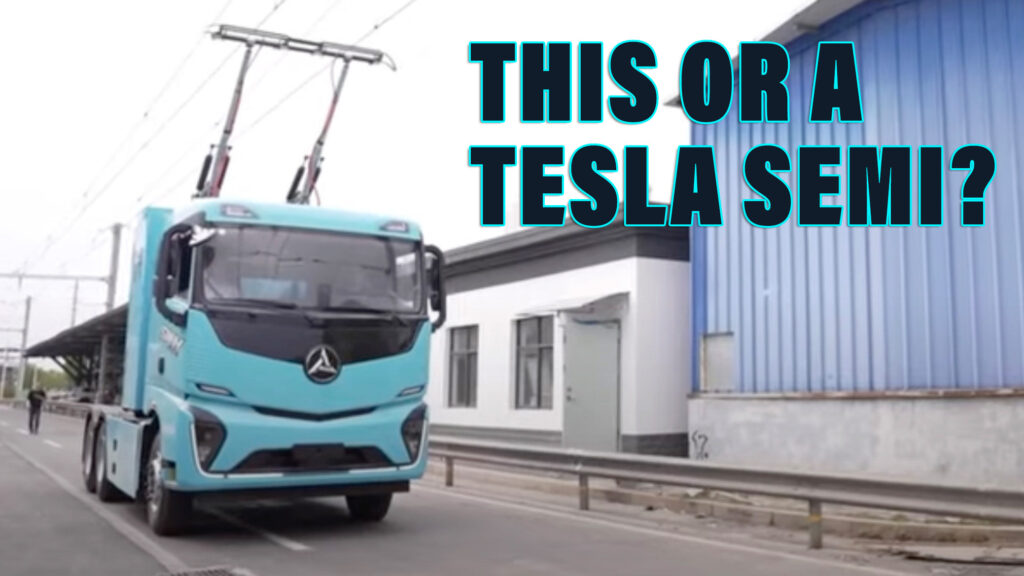Tesla delivered its first battery-powered Semi trucks just as the sun was setting on 2022, but while we might be seeing the sun coming up on a new generation of electric trucks, not everyone believes Tesla’s way is the right way.
Instead of electrifying heavy commercial vehicles in the same way we have electrified cars, but with enormous heavy and expensive batteries to cope with the payload, other companies are putting their money behind the development of trucks powered by overhead lines.
Yeah, installing thousands of miles’ worth of ugly power cables over a country’s roads using technology that looks unnervingly familiar to the stuff used on city trams over 100 years ago seems less futuristic than Tesla’s solution, but there’s sense in the science. Pulling in energy from overhead cables means the truck can get away with a smaller battery, and a smaller battery means a cheaper, lighter truck. Plus, not having to stop and charge mid-route could lead to shorter delivery times.
Related: Electric Truck Stops In 2035 Will Need As Much Juice As A Small Town, Report Claims
The current in the cables can power the truck and charge the battery, which can then be used in areas that don’t have lines overhead. And although the idea requires a significant of investment to get the wires set up, one study in the UK suggested the cost could be recouped in 15 years. It could also provide fewer headaches than trying to engineer hundreds of truck stops across a country capable of delivering massive amounts of electricity to dozens of power-hungry vehicles in the same spot at the same time.
The electric truck seen here in the video, which we’ll admit doesn’t look anywhere near as cool as a Tesla Semi, was apparently built by CRRC Zhuzhou Electric Locomotive Research Institute Co. But it wasn’t alone, because the same week another company from the CRRC group revealed another truck powered by overhead cables, according to The Register.
The green truck was showcased on China’s first electrified highway, a stretch of road in the country’s Hunan Province set up for demonstration and testing purposes, but the idea is almost certain to be expanded to real roads. Sweden, Germany and the U.S. have already tested, or are in the process of setting up trials to assess the viability of tram-style trucks.




